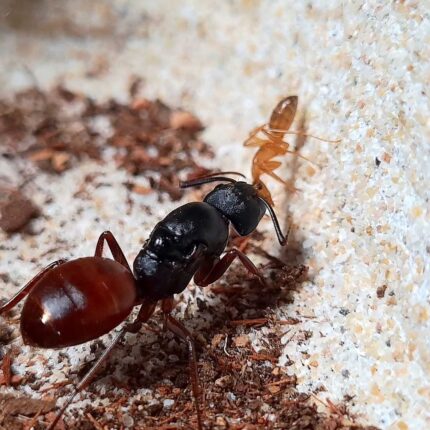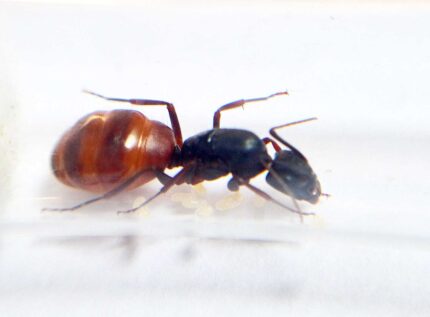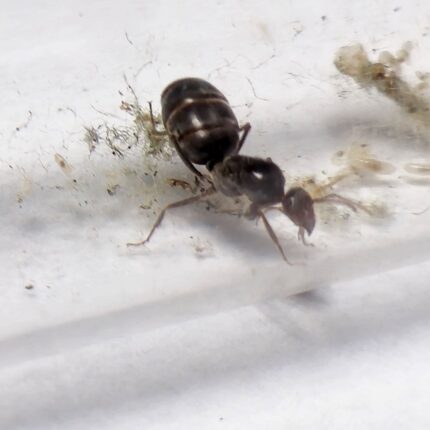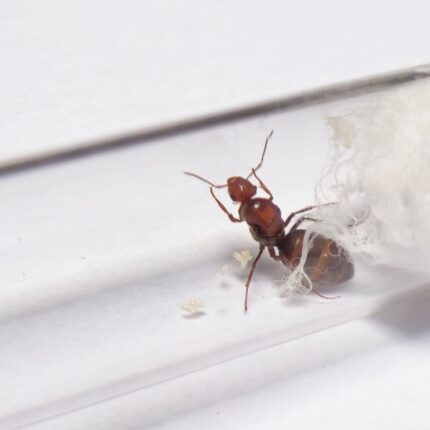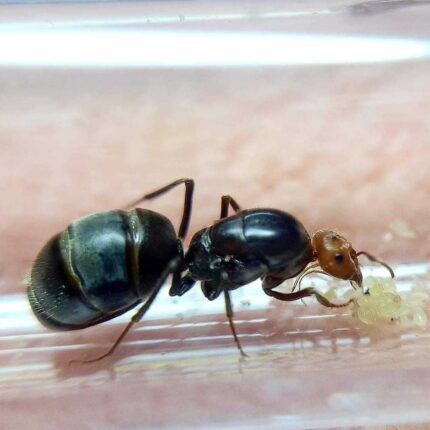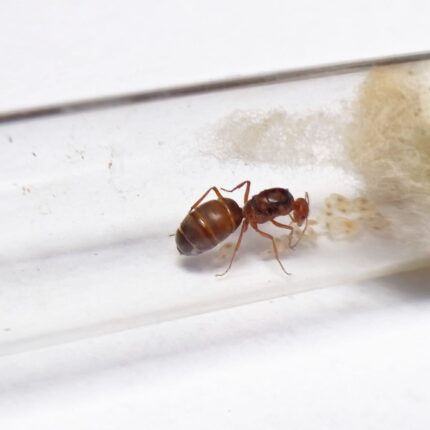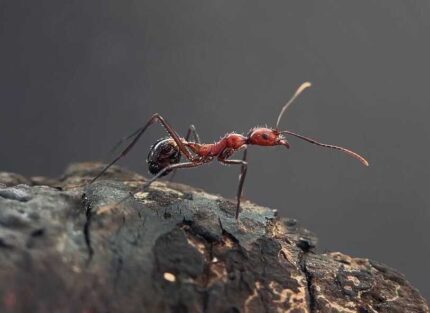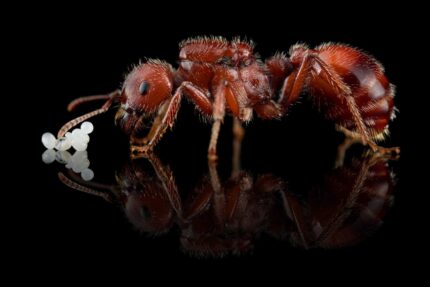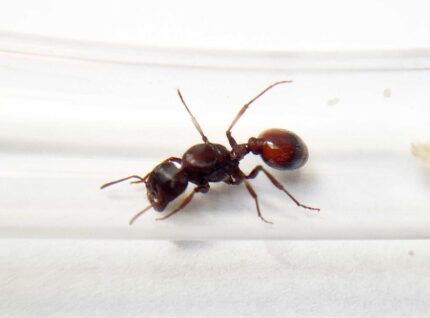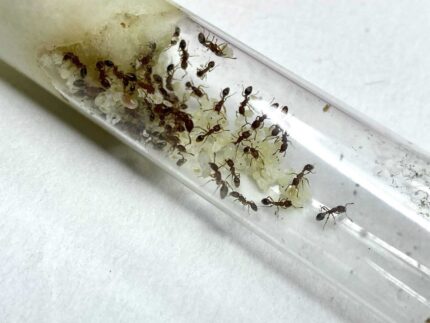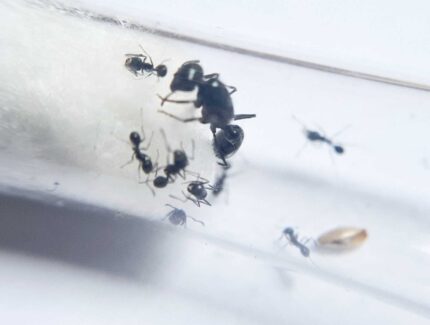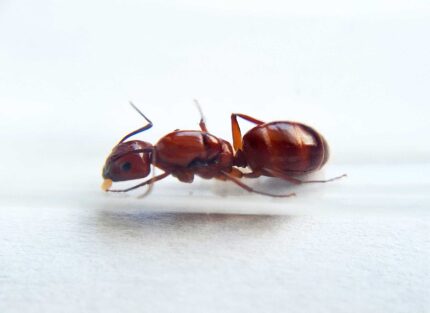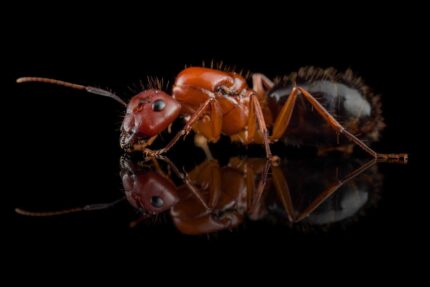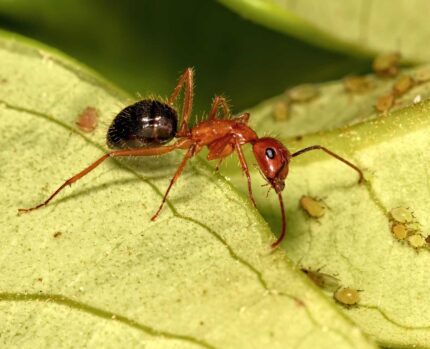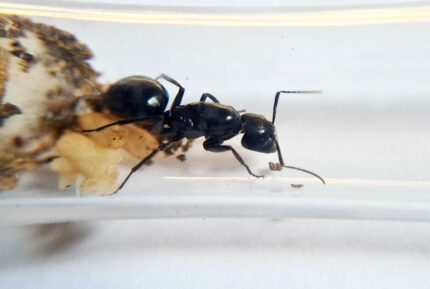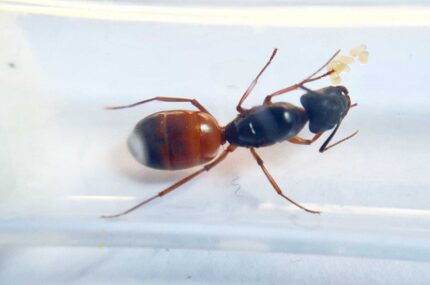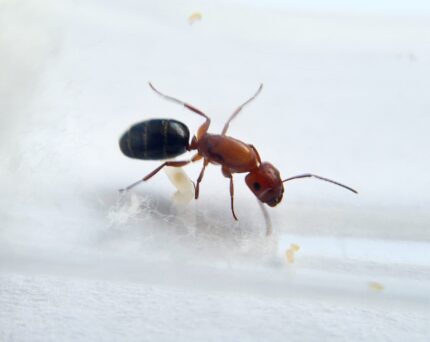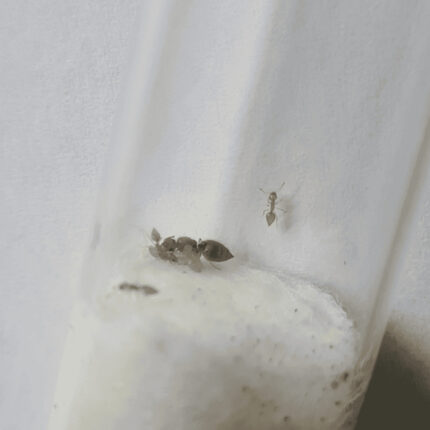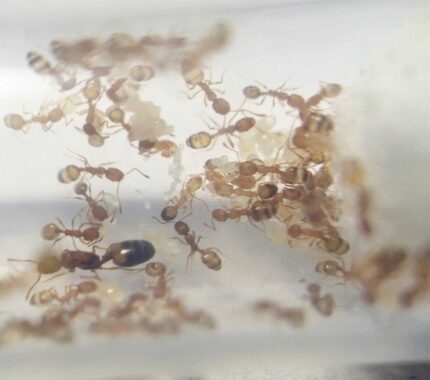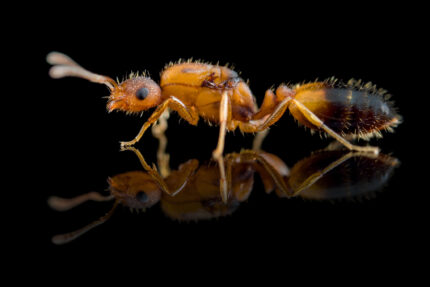Camponotus Ca02
499,90 zł – 679,90 złCamponotus CA02 is a monogynous ant colony with a medium development speed. The colony can have up to 5000 workers. The queen measures 19-23 mm, workers measure 7-14 mm, and majors measure 14-22 mm. They have a black head and chest with an orange-yellow belly. Their nutrition includes insect food, syrup, fruits, vegetables, and jelly.
Myrmecocystus flaviceps
549,90 zł – 869,90 złMyrmecocystus flaviceps is a monogynous ant species with a medium development rate. The queen measures 11–12 mm, while the workers range from 4–8 mm. They typically display a reddish head and thorax with a darker gaster. This species is known for its honey pot workers (repletes), which store liquid food in their distended abdomens.
They feed on insects, syrups, fruits, vegetables, and protein-rich foods. Humidity should be maintained at 40–60% in the arena and 50–70% in the nest, while the temperature should remain between 23–30 °C in the arena and 22–26 °C in the nest.
Myrmecocystus kennedyi
549,90 zł – 869,90 złMyrmecocystus kennedyi is a monogynous ant species with colonies reaching up to 5,000–8,000 workers. They develop at a moderate pace. The queen measures approximately 12–14 mm in length, while workers range from 4.5 to 7 mm. Their body is typically light to reddish-brown, with a slightly darker gaster, and they have a somewhat glossy appearance. As with other species in the genus, repletes (specialized workers that store food) may be present in mature colonies. Their diet consists of insect prey, sweet substances like nectar or syrup, fruit, jelly, and protein-rich foods such as cooked egg or chicken.
Myrmecocystus mimicus
589,90 zł – 949,90 złMyrmecocystus mimicus is a polygynous colony of ants with a medium development rate. The queen is 10-12mm in size, while the workers are 4-8mm. They have a red head and black body. They feed on food insects, fruits, vegetables, and seeds. The humidity in their arena should be 50-70% and in their nest 70-90%. The temperature should be regulated accordingly.
Myrmecocystus wheeleri
549,90 zł – 869,90 złMyrmecocystus wheeleri is a monogynous ant species with colonies reaching up to 6,000–10,000 workers. They exhibit a moderate development speed. Queens measure approximately 12–14 mm in length, while workers range from 4.5 to 7 mm. Their coloration is generally light to reddish-brown, with a darker, often slightly translucent gaster. Like other species in the genus, they may develop repletes—workers specialized in storing liquid food. Their diet includes small insects, sugary liquids like nectar or syrup, fruits, jelly, and protein-rich foods such as cooked chicken or egg.ir diet includes small insects, sugary liquids like nectar or syrup, fruits, jelly, and protein-rich foods such as cooked chicken or egg.
Novomessor cockerelli
319,90 zł – 329,90 złThe Novomessor cockerelli is a monogynous ant species with colony sizes of up to 5000 workers. They have a medium development speed and are characterized by queens measuring 12-14 mm and workers measuring 7-10 mm. These ants are red with a black abdomen and feed on forage insects, fruits, and seeds. They prefer a humidity level of 60-80% in the arena and 50-70% in the nest.
Pogonomyrmex rugosus
389,90 zł – 729,90 złPogonomyrmex rugosus is a monogynous ant species with colony sizes of up to 10-15 thousand individuals. They have a medium development rate and their queen is 10-12mm in size while workers are 5-7mm. They have a dark brown color with a dark orange abdomen and feed on food insects and seeds. They prefer a humidity level of 40-60% in the arena and 50-60% in the nest.
Veromessor pergandei
309,90 zł – 419,90 złVeromessor pergandei is a monogynous ant species with colony sizes of up to 5000 workers. The development rate of the colony is medium. The size of the queen is 12-16mm and workers are 10-12mm. The ants have a black head and belly, with an orange-red to dark red chest. Their nutrition consists of food insects, syrup, and fruits.
Camponotus castaneus
499,90 zł – 719,90 złThe Camponotus castaneus is a monogynous ant species with a colony size of up to 1000 workers. They have a medium development speed and come in sizes ranging from 7-12 mm for workers to 17-18 mm for queens. These light orange ants feed on food insects, syrup, fruits, vegetables, jelly, and cooked chicken.
Camponotus laevigatus
299,90 zł – 399,90 złCamponotus laevigatus, also known as large gloss black ants from the USA, are monogynous with a single queen per colony. This product provides information on their size, development speed, nutrition, humidity, temperature, and recommended nests for breeding. Queen ants measure 14-17mm in length.
Camponotus sansabeanus
379,90 zł – 489,90 złCamponotus sansabeanus is a monogyne ant species with colonies reaching up to 10,000 individuals. They develop rapidly, featuring a queen size of 16-19 mm, workers at 6-12 mm, and majors measuring 13-17 mm. Their coloration includes a black head and chest with an orange-brown gaster. They primarily feed on insects, syrup, fruits, and vegetables.
Camponotus sayi
249,90 zł – 419,90 złCamponotus sayi is a species of ant with a monogynous colony type and a slow development speed. The colony can have up to 5,000 workers. The queen is 12-13 mm in size, workers are 4-7 mm, and majors are 9-12 mm. They have an orange-red head and chest, and a shiny black belly. Their nutrition includes food insects, syrup, fruit, and vegetables.
Crematogaster minutissima
309,90 zł – 429,90 złCrematogaster minutissima is a monogynous ant species with colonies of up to 10,000 workers. They have a fast development speed and the queen measures 5-7 mm while the workers are 2-3.5 mm in size. They are yellow, with a brownish-yellow tint. Their diet includes food insects, syrup, fruits, vegetables, jelly, and cooked chicken.
Lasius alienus
39,90 złLasius alienus is a species of ant commonly found in Europe and parts of Asia. It typically nests in soil, often under stones or in grassy areas. These ants are small, dark brown to black, and are known for their cooperative colony behavior. Lasius alienus plays an important role in the ecosystem by aerating soil and preying on small insects.


